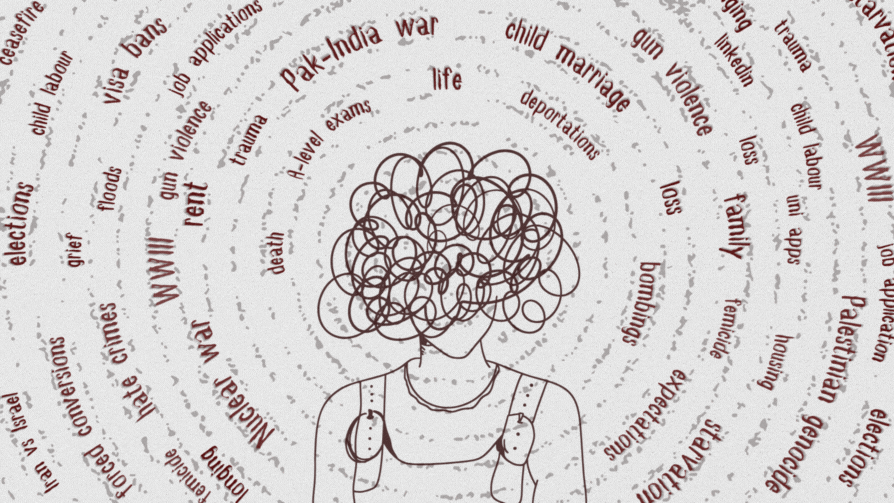Sanam Marvi’s ‘Sindhu Wahando Rahando’ has become an anthem for Sindhis protesting against the canal project
“Sindh’s sands are priceless to me; gold and silver are but worthless. In this world of hell, you are my paradise.” These are the words of Dr Ishaq Samejo in his ode to Sindh and the Indus River in a poem titled Jug Jug Jeando Rahano, Sindhu Wahando Rahando. This poem — turned into a song with the help of people as passionate as Dr Samejo about the sanctity of the river — is slowly becoming the anthem of Sindh’s resistance to a project they believe will siphon away their water rights.
For decades, music has served as a powerful catalyst for social change and revolution. The tale of Sindh is no different — the province has a rich tradition and long-standing history of revolutionary songs that have played a vital role in uniting communities and fuelling movements.
Born during the Anti-One Unit Movement, which protested against the reorganisation of the provinces by the central government for 15 years starting in 1954, was Shaikh Ayaz’s poem Sahendo Ker Mayar Oh Yar Sindri Te Sir Ker Na Dino (Who will tolerate insult, instead will lay down his life for Sindh). During the 90s, when Karachi and Hyderabad bled, Abida Parveen sang the powerful poetry of Tajal Bewas.
Poetry and song have long been written during trying times in Sindh. During the Movement for the Restoration of Democracy in the 80s, when young people from across the province rallied against General Zia, seasoned poets such as Ayaz, Ustad Bukhari, Haleem Baghi, Sarwech Sujawali, Akash Ansari, and Dr Tanveer Abbasi inspired with their poetry.
On Sujawali’s first death anniversary, the late writer and politician Rasool Bux Palijo paid tribute to the enduring spirit of Sindhi poetry, recognising the role poets played in stirring the conscience of Sindh’s people and encouraging them to rise against injustice.
Furthering the cause have always been singers, such as Jiji Zarina Baloch, Ustad Muhammad Yousuf, Sarmad Sindhi, Abida Parveen, Sadiq Fakir, and Shafi Faqeer, who turned those poems into anthems of change.
The song of a movement
Today, Sindh is once again protesting. This time, the protests are over a shortage of irrigation water and the proposed six canals scheme under the Green Pakistan Initiative (GPI).
As Bisma Barkat, a member of the Karachi Bachao Tehreek organising committee, told Dawn.com, “the capitalist interests combined with the state want to take away the rights of the common man [and] what belongs to the common man.”
The GPI, spearheaded by the federal government, hinges on a network of six newly-developed canals that will channel water from the Indus River to irrigate Punjab’s Cholistan desert region. It is being touted as a bold step towards ensuring food security and rural upliftment, transforming barren lands through modern farming techniques.
But what is being hailed as a game-changer for Punjab has triggered an uproar in Sindh, where farmers and others dependant on water from the Indus River fear the project will siphon away their water rights.
In recent months, opposition to the project has intensified. In March, heated debates erupted in the Sindh Assembly as lawmakers clashed over the project before unanimously passing a resolution demanding “an immediate halt to all plans and activities related to the construction of the canals.”
Many activists, lawyers, farmers, and students have also joined the chorus of voices, cautioning against the far-reaching repercussions of the plan.
People from all corners of the province are converging on the Babarlo Bypass in Khairpur, the central point of the protest, to join hands with the legal fraternity and strengthen their voice for the riparian rights of Sindh and the survival of the Indus River.
During this tumultuous time, an anthem rose. ‘Jug Jug Jeando Rahano, Sindhu Wahando Rahando’ (The Indus River shall survive forever, it shall flow forever), sung by the celebrated Sanam Marvi, significantly impacted the campaign and helped it garner widespread support.
The song stems from a poem of the same name by renowned poet Dr Samejo, and though its creators might have hoped for its popularity, its overwhelming reach far exceeded their expectations.
According to Fida Hussain Baghat, the videographer and director of the music video, the journey began four months ago when Samejo approached him with a request to film scenes featuring Marvi, the acclaimed singer whose Coke Studio renditions of ‘Hairaan Hua’ and ‘Lagi bina / chal mele noon challiye’ with Saeen Zahoor are well-known and loved.
Baghat recalled that Marvi, mesmerised by the lyrics, agreed to lend her voice to Samejo’s poem.
The poet himself, the author of multiple books of poetry, short stories, and prose, was surprised at the song’s remarkable success, admitting he never imagined such a huge response to a poem he had penned long before it found new life as a widely-celebrated song.
The makings of an anthem
It all began over a joint discussion to turn Samejo’s verses into music.
“Former culture minister and poet Syed Sardar Ali Shah, Fida Hussain Baghat, and I sat together and decided to transform my poetry into a song. The lyrics were selected by Sardar Shah,” said Samejo.
He revealed that he knew the song would become a hit, but hadn’t fathomed that it would become a hymn of struggle.
Offering a glimpse into the emotions and ideas that inspired his words, the poet also shared a few verses from the song that he held close to his heart:
Oh darti, oh Mata he jee Sindhi panj crore // Dinda kon pawan Sindhu te hare ke panjore // Shenh babar jiyan he hamesh, agte wadando rahendo // Jug jug jeando rahando
(Oh beloved motherland, Oh Sindh! Fifty million Sindhis will not let the Indus River wither away, it will keep roaring like a lion!)

For Samejo, the song narrated the historic significance of the Indus River — including its role in feeding the poor and fishermen — to the people of Sindh.
A tribute to the Indus
“Baghat left the mainstream media industry long ago, but since he had songs like ‘Jiye Sindh Jiye’, ‘Jiye Muhinji Sindh’, and ‘Awan Ta Dil Tan’, among others, I wanted him to work on the video making and graphics of this song,” Samejo explained.
Talking about the visuals of the video, the videographer said it featured farmers working on their land, fishermen sitting on boats floating along the Indus River, children holding fish in their hands, historic sites, and the lush and fertile lands of Sindh, interlaced with clips of Marvi singing the song.

“The video aimed to highlight the role of the Indus River in enriching the centuries-old Indus Valley Civilisation and improving the quality of life of people across Sindh,” he explained.
Marvi was instantly sold on the idea of performing this poem. The singer told Images, “I would like to give credit to Dr Qadir Sarki, who shared these lyrics with me, and I instantly agreed to sing this masterpiece.”
She added that composer Irfan Samo worked very hard to create a tune best suited to her voice and style of singing, calling this a landmark song in her career, which spans more than two decades.
“This song is my tribute to the Indus River and the Indus Valley Civilisation.”

Samo said all the artists who worked on the project, including Marvi, offered their time and talent without charging a single rupee, highlighting their unwavering dedication to the homeland.
He said it was an honour to compose the tune for a masterpiece that had inspired the people of Sindh, adding that Samejo’s poetry had breathed new life into a dying musical tradition, reviving Sindhi music at a time when it was needed most.
“Throughout Sindh, this song has been a moving spirit behind processions, sit-ins, rallies, and events organised to condemn the six canals scheme, which will be responsible for an unceasing water crisis across Sindh if successfully executed.”
Samejo experienced the song’s widespread appreciation firsthand, remarking that people would approach him to pay their respects as soon as they discovered he was the person behind it.
A song for Sindh by Sindh
Needless to say, the song is cherished by the people of Sindh. Although the music video originally debuted on YouTube in December 2024, its recent transformation into an anthem has only amplified the public’s appreciation for it. From young students to social media users to protestors, the song has permanently etched itself into Sindh’s history.
Zubair Jaffrani, a representative of the Sindh Culture Department, said, “Many students told me that this song, ‘Jug Jug Jeando Rahano,’ is sung daily during assembly in different public schools of rural Sindh, after which teachers apprise students about the environmental crisis taking place across Sindh in the wake of the ongoing water crisis.”
Emerging musician and videographer Shahzaib Ali said that listening to the song daily was like having an energy drink, boosting one’s spirit and connection to their homeland. Musician and composer Asif Virani aptly described the tune as “a melody of change.”
The song has also become a popular choice for the videos of social media users across Sindh.
Ajeeb Lakho, who is covering the Babarlo sit-in staged by the legal fraternity and Sindhi nationalist groups, said the song was played countless times at the protest to keep the protesters charged.












Comments